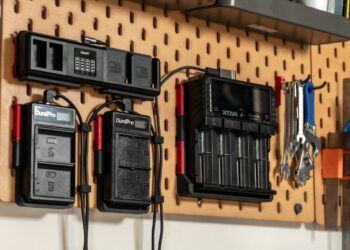Have you ever Googled your restaurant? What do the reviews say about your business? It may be a hard pill to swallow but not everyone is going to have the best time at your restaurant all the time. However, if you are getting multiple negative reviews, there could be a greater reason behind it. What if a top point of sale system could help you figure out why these reviews keep happening, or what if it’s an employee creating these bad experiences?
This guide gives you some tips on how to make sure your restaurant’s experience is always 100% for your guests.
1. Audit Your Customer Touch Points
If you explored all the ways that customers find your brand, you may be surprised to see that there are areas where they can see bad reviews or encounter friction on your website when trying to look at your menu. If you could stop these simple road blocks from deterring customers, you’ll likely get more business and improve your online reputation.
In addition, how are you taking care of the customer at your restaurant? How are they greeted? Is your menu easy to understand? What kind of specials do you offer? If you can see all of the ways that customers look at your brand, you’ll get a better picture of what’s going right and what’s going wrong.
2. Rely on Important KPIs
Key performance indicators are metrics that you can use to see how your restaurant is doing. Customer satisfaction is a larger KPI that can have several metrics attached to it. For example, how many customers are signing up for your loyalty program? How many customers took advantage of a loyalty offer?
Some of the most important indicators of customer satisfaction include:
- Number of loyalty signups per day, week, month, year
- Cost of customer acquisition
- Churn or customer abandonment
- Customer satisfaction score (measured through surveys, reviews, and ratings)
- Customer effort score
- Return customer visits
You can use a top point of sale system to see many of these metrics in action. For example, you can sign up customers through a mobile POS checkout or you can offer surveys to customers by email or directly through a tabletop POS. This can give you instant insights into your restaurant’s performance.
3. Spot Problematic Employees
Have you noticed customers complaining at specific tables or when dealing with a certain host? While you don’t want to blame one particular employee, you can’t help but notice which ones have a natural way with customers. If you have issues with multiple employees, then you should have a conversation with everyone about your guest experience policy and how to handle difficult situations. If the problems don’t stop, then you have to weed out those who are hurting your business.
4. Offer a Loyalty Program with Specific Promotions
Do you have a guest loyalty program? What kind of rewards do you offer customers who continuously come back to your store? If you don’t already have something in place to satisfy your customer’s food cravings with your amazing specials, then you’re missing out on some great marketing opportunities. Guest loyalty programs can improve your customer satisfaction drastically in just a short period of time.












